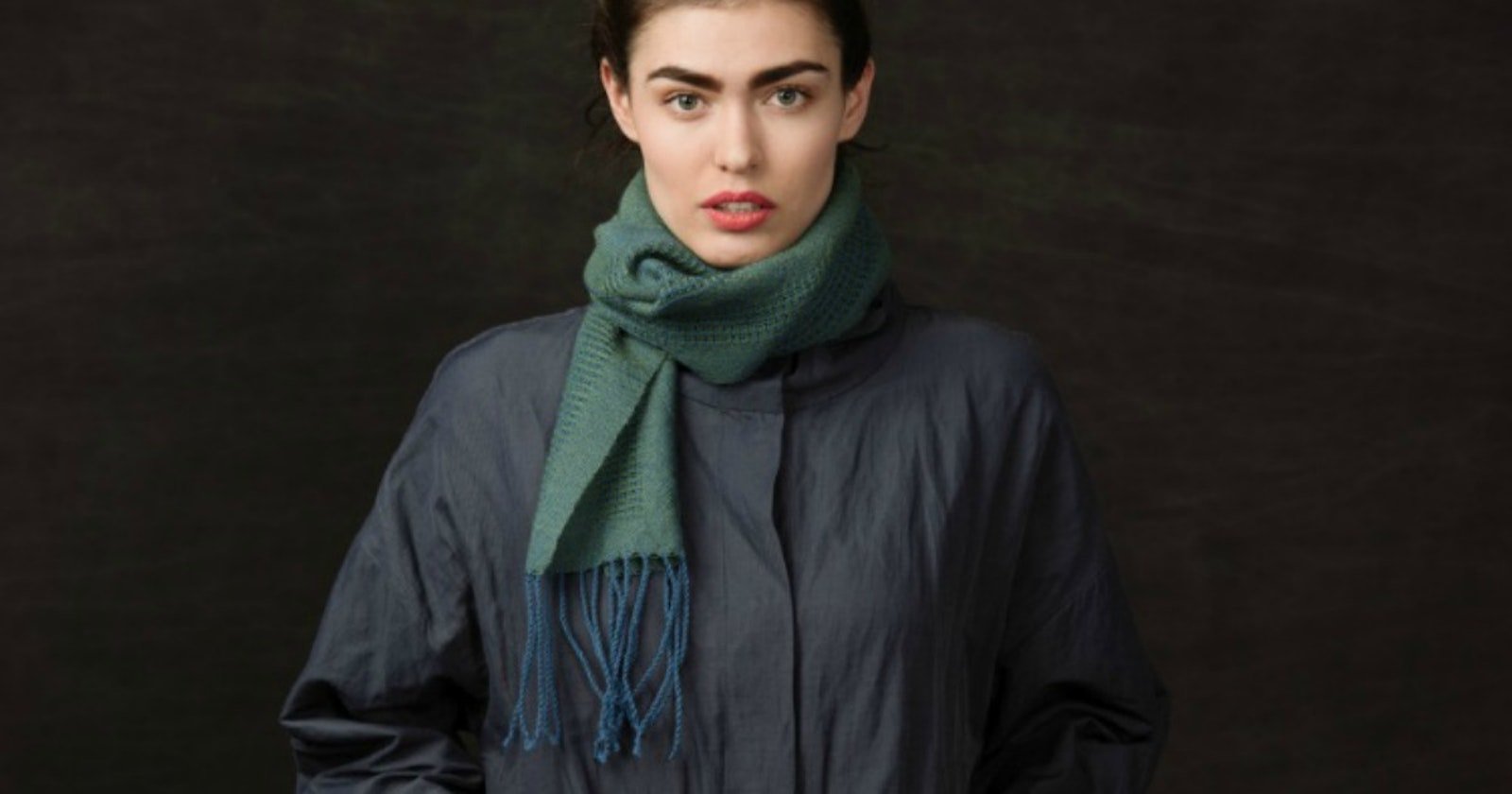In the same way I might build an entire recipe around fresh, roasted green chiles, I like to build scarves around special silks, luscious wools, and slinky Tencels.

Lisa Hill’s Bubbles Shawl.
I also have to decide if I’m going to use the ingredients by themselves or pair them with something else. Some ingredients can go either way—a ripe peach is equally as perfect eaten fresh off the tree as it is grilled, with a scoop of vanilla ice cream added. There are times I might prefer one or the other, but I don’t think I could pick which one I love more. The same can be applied to weaving. Take Elisabeth Hill’s deflected doubleweave Bubbles Shawl from the Handwoven Loom Theory: Four-Shaft Scarf Collection. It’s woven using Borgs’ Mora and Fårö wool yarns. She used the Mora, a soft wool yarn that does not full, to weave the bulk of the design and then saved the Fårö—a wool yarn that does full—for the outline. When wet-finished, the Fårö shrinks just slightly, giving the shawl its wonderful bubbles and making the deflected doubleweave extra deflected. It’s brilliant.
Of course, as beautiful as Elisabeth’s scarf is, so is Suzie Liles’s Swedish Lace Scarf (top), which is also woven using Mora and only Mora. Again, the fact that Mora doesn’t full is an attribute, although this time it’s because this lack of fulling is what allows you to see every bit of the lace patterning. The fineness of the Mora also lends itself to some spectacular colorplay. In both versions of the scarf—the blue and green as well as the black and white—the warp and weft yarns blend perfectly, giving the finished cloth a heathered effect. Same yarn, different approach, and still the result is wonderful.

Deanna Deeds Bead-Leno Scarf.
As another example, Deanna Deeds wanted to weave a bead leno scarf that was warm and soft with great drape using Jagger Spun yarns. She could have used one of just about any of Jagger Spun’s yarns and ended up with what she wanted, but instead she used a perfect combination of Zephyr (50% wool/50% silk), Kokadjo (90% superwash wool/10% silk), and Super Lamb (100% superwash wool). The result is a scarf that is both light and warm with a perfect amount of shine, thanks to the silk content in the Zephyr. The Kokadjo is a bit thicker than the other yarns and is used in smaller amounts than the other two to great effect—adding just a bit of extra visual interest to the scarf.

Sarah Jackson’s Turnabout Scarf.
At other times, you need just a hint of an ingredient to bring out the best in another. A pinch of sea salt on a radish, for example—an addition so small yet so important. Weaving design can also benefit from stealth seasoning. This brings me to
Sarah Jackson’s Turnabout Scarf.
It’s woven using Cotton Clouds’ luscious Gypsy Chenille and shimmering Tencel. Sarah designed the scarf in diversified plain weave so the chenille stands out front and center. But then, when you look harder, you can see the sleek shine of the Tencel peeking out between every pick of the chenille, holding it in place and giving the scarf an extra bit of oomph you wouldn’t get from the chenille on its own. The effect is amazing.In fact, I’d say all the scarves in the Handwoven Loom Theory: Four-Shaft Scarf Collection are perfect examples of how to approach designing around a yarn. Each of the designers has figured out ways to make what she loves about a specific yarn come front and center. Each scarf in the lookbook is woven with different luxury yarns in a way that highlights the best aspects of each yarn—all on only 4 shafts. What’s not to love?
Happy Weaving!
Christina

